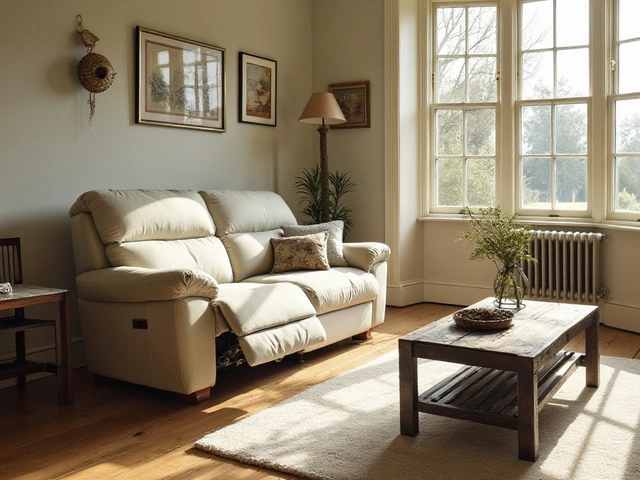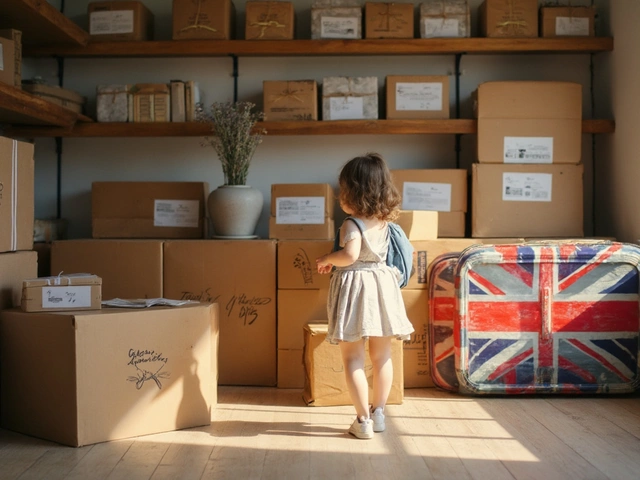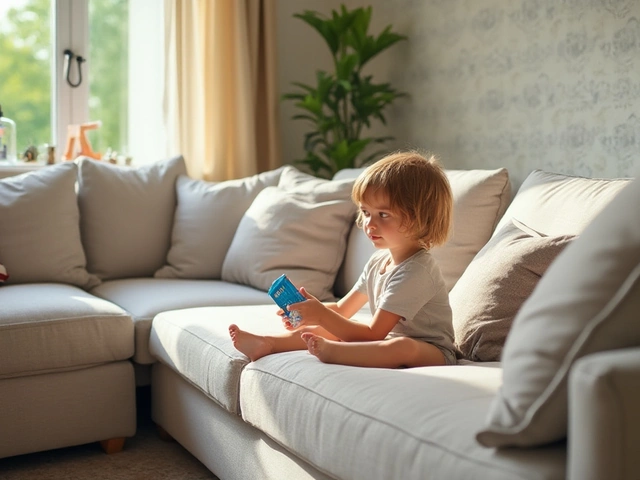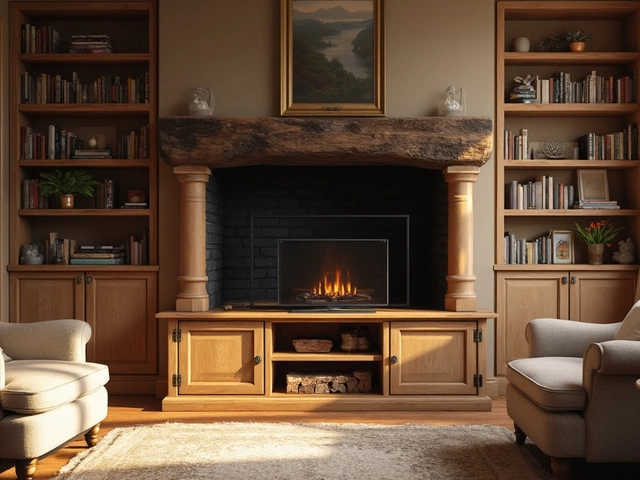 18
Jun,2025
18
Jun,2025
Wrapping furniture isn’t just about keeping it clean. It’s the difference between pulling your stuff out of storage in perfect shape or with mystery scratches and busted corners. Nobody wants to see their favorite chair dinged up because of bad packing choices.
You’ve probably seen all kinds of wrapping hacks online—some work, some just waste money. There’s plastic wrap, bubble wrap, moving blankets, cardboard… even old sheets. Which one actually does the job? Here’s a quick hint: choosing the right material often depends on the type of furniture and how long it’ll sit in storage.
You might not realize this, but professional movers almost never rely on only plastic wrap. There’s a good reason—they don’t get paid to apologize for cracked tables. Think about those heavy, wooden dressers. Slide them across a truck bed without anything in between and you can kiss that finish goodbye. That’s why it pays to get this part right.
- Why Wrapping Matters for Furniture
- Top Materials for Wrapping Furniture
- Plastic Wrap: The Good, Bad, and Ugly
- When to Use Moving Blankets
- Eco-Friendly and Budget Options
- Quick Tips for the Best Protection
Why Wrapping Matters for Furniture
It only takes one move or storage stint for even good furniture to take a beating. That’s why wrapping is a must, not just a nice-to-have. Unprotected wood, fabric, or glass can quickly end up scratched, stained, cracked, or worse. These problems usually show up when you’re unpacking—when it’s already too late to fix them without shelling out for repairs or replacements.
Here’s what actually happens when furniture isn’t wrapped right:
- Scratches and chips from rubbing against rough surfaces or other items
- Dust and dirt creeping into upholstery or wood grain
- Moisture sneaking in, causing warping or even mold in a few months
- Sunlight fading fabric during long-term storage with windows
- Unwanted guests like bugs getting cozy in cozy places
Ever seen stat sheets on moving accidents? Check this out—data from a 2024 storage industry report breaks down what kind of damage is most common when furniture isn’t wrapped up:
| Type of Damage | Percent of Unwrapped Furniture in Storage |
|---|---|
| Scratches/Scuffs | 62% |
| Dirt or Surface Stains | 41% |
| Water Damage | 15% |
| Structural Breakage | 8% |
With numbers like these, it’s clear: skipping the wrap is a bad gamble. Protecting your stuff right from the start means less stress and less cash spent fixing what could have been avoided.
If you’re serious about furniture wrapping, it pays to know what you’re up against with moving, storage units, or shipping. Whether it’s a couch or a coffee table, proper wrapping is just smart insurance for your stuff.
Top Materials for Wrapping Furniture
If you've ever moved or stored anything bigger than a suitcase, you already know that different wrapping materials work better for some stuff than others. Let’s break down the main options, what they’re good for, and what you should steer clear of.
- Plastic Wrap (Stretch Wrap): The king of keeping drawers and doors in place. It’s cheap, clings to itself, and gives a tight seal that blocks out dust and moisture. Great for couches, wood furniture, or stacked chairs. But—it doesn’t offer much protection against knocks and bumps. And if you leave it on too long, it can sometimes trap moisture that leads to mold or stick to certain finishes.
- Moving Blankets: These are thick, padded quilts. Movers swear by them for a reason—they soak up shocks, prevent scratches, and protect edges. Tack on some tape or stretch wrap to keep them in place. Blankets are reusable, but take up some space.
- Bubble Wrap: Good for fragile or delicate surfaces. Think mirrors, glass shelves, table corners, or anything with a high-gloss finish. You’ll need a lot for big items, and it does get pricey, so save it for pieces that really need the cushion.
- Corrugated Cardboard: Super handy for making furniture “armor.” Slide big, flat sheets between stacked items, or use cutouts to protect corners and legs. Sometimes, you can just slice up old moving boxes instead of buying new sheets.
- Old Sheets or Towels: Not perfect, but if you’re on a budget and only storing for a short time, these are better than nothing. They help with dust, just not so much with impact or moisture. Avoid using dyed fabrics for light-colored furniture—they can bleed in humid spots.
Here’s a cheat sheet with the pros and cons for each:
| Material | Best Use | Drawbacks |
|---|---|---|
| Plastic Wrap | Securing drawers, dust protection | No impact protection, can trap moisture |
| Moving Blankets | Shock and scratch protection | Bulky, must secure with tape/wrap |
| Bubble Wrap | Fragile, glass, or delicate items | Expensive for large areas |
| Corrugated Cardboard | Edge, leg, or surface armor | Not moisture-proof |
| Old Sheets/Towels | Short-term dust barrier | Poor against dents, can transfer dye |
It boils down to mixing and matching. Professional movers never use just one material—they layer up and use each type where it makes the most sense for furniture wrapping. If you want furniture to come out looking the same as it went in, that’s the way to go.
Plastic Wrap: The Good, Bad, and Ugly
Plastic wrap is usually the first thing people grab when they think about furniture wrapping. And honestly, it does have some solid upsides. For one, it’s cheap, and you can find it almost anywhere. It clings tight, keeping dust, dirt, and moisture away from your stuff. When you wrap couch cushions or small tables, plastic does a good job holding everything together so pieces don’t shift around during the move.
Now, the not-so-great parts. Plastic wrap traps moisture. If there’s any humidity on your table or couch when you wrap it, you’re basically locking that in—a recipe for mold or a funky smell. Plus, plastic isn’t great at stopping dents or scratches. Wrap a chair in it and slide it across concrete, and you’ll see what I mean. In really hot or cold weather, plastic can even stick to certain surfaces, especially leather or painted wood. Pull it off, and the finish might come with it.
There’s another common mistake: wrapping directly onto the furniture. Always put a soft layer—like a blanket or towel—between your plastic wrap and anything delicate or expensive. That helps prevent sweat spots, weird sticking, and those tiny scratches nobody notices until it’s too late.
- Use plastic wrap to bundle loose parts or cushion covers.
- Don’t use it as the only layer if you care about the finish.
- Always clean and dry surfaces before wrapping.
- Never wrap leather or varnished wood directly.
Plastic wrap can be a lifesaver for quick jobs, like keeping dresser drawers shut or warding off dust. Just know where it shines and where it’s likely to let you down. Mix it with other materials and your furniture will thank you later.
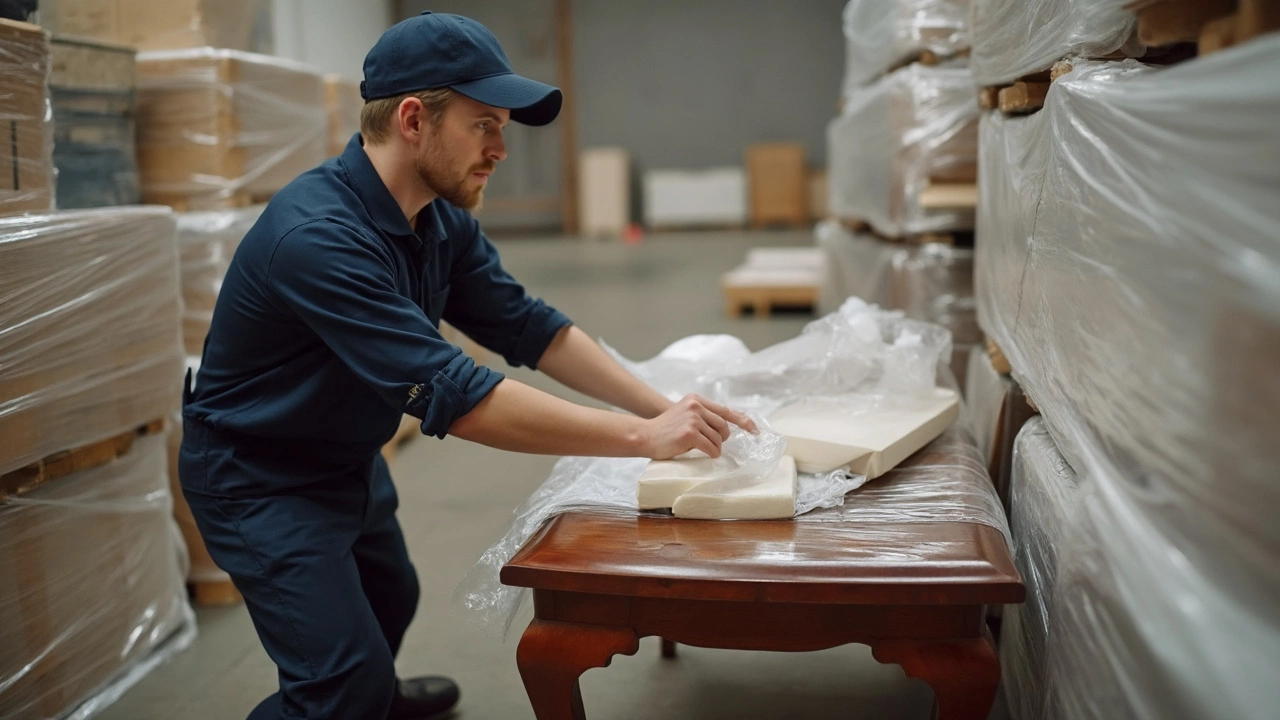
When to Use Moving Blankets
Moving blankets are hands down the go-to for heavy or valuable furniture. There’s a reason pro movers pack their trucks with these thick pads—they stop gouges, dings, and busted corners when nothing else will. If you’re storing wood furniture, glass, or anything with a painted surface, moving blankets have your back.
Here’s when you definitely want to grab these:
- Furniture wrapping during long-term storage or long-distance moves
- Protecting items with fragile finishes, like pianos or antique wardrobes
- Stacking lots of items together so they don’t rub or scratch
- Covering sofas and beds to keep out dust and moisture
Don’t just throw a blanket over and call it good. Make sure to wrap each piece tightly and secure with packing tape or stretch wrap. That keeps the blanket from slipping and exposing surfaces.
A lot of people try to save money by using bedsheets or comforters. While they’re better than nothing, they just aren’t thick enough to absorb impact. Here’s an easy way to see the difference—moving blankets usually have 3-4 layers of padding versus one thin layer in household bedding.
Check out how moving blankets stack up compared to other options:
| Material | Protection Level | Reusable | Cost per Blanket (Avg.) |
|---|---|---|---|
| Moving Blanket | High | Yes | $10-15 |
| Plastic Wrap | Low-Medium | No | $2-5/roll |
| Bubble Wrap | Medium | No | $7-10/roll |
| Old Sheets | Low | Yes | Free (if on hand) |
Pro tip: You can actually rent moving blankets from most truck rental places or storage companies. No need to fill your hall closet with stacks of pads you’ll never use again. Just make sure the blankets are clean and free of any debris that could scratch your furniture.
Eco-Friendly and Budget Options
If you’re trying to cut down on waste and spending, there are some solid eco-friendly moves that don’t mean skimping on protection. A lot of folks think you need brand-new materials for every move, but the truth is, you already have plenty of options at home.
For starters, fabric is a lifesaver. Old sheets, towels, and even clothes work well for wrapping smaller pieces—think lamps, chairs, or coffee tables. They act as a cushion and can be tucked around corners for extra padding. Plus, you’re not tossing anything after use. Win-win.
Cardboard is another MVP for furniture wrapping. Break down old boxes and slide them between table tops or under furniture legs to prevent scratches. For fragile edges or glass surfaces, layering cardboard offers shock absorption almost as good as professional moving pads.
- Old newspapers or packing paper: These fill gaps and wrap delicate surfaces. Just avoid direct contact with wood, since ink from newsprint can leave marks after long storage.
- Reusable moving blankets: If you don’t own any, most moving supply rental places will let you borrow them for a few bucks. Better than buying them new—and no waste when you’re done.
- Thrifted blankets or quilts: Hit up local thrift stores for sturdy blankets that you can wash and reuse multiple times. They’re usually way cheaper than new padding or bubble wrap.
If you want real data, the National Association of Professional Organizers found that using reusable packing supplies can cut moving waste by 70%. That’s huge, especially for cross-town or repeat moves.
| Eco-Friendly Option | Estimated Cost (per item) | Reusable? |
|---|---|---|
| Old Sheets/Towels | $0 (already owned) | Yes |
| Cardboard Pieces | $0 (from used boxes) | Most single-use |
| Rented Blankets | $2-4/blanket | Yes (returned after use) |
| Thrift Store Blankets | $3-10 each | Yes |
So, before you buy new rolls of plastic or bubble wrap, peek around your place or local store. You’ll save money and the planet, all while keeping your stuff in one piece.
Quick Tips for the Best Protection
If you just want to cut the risk of damage and save yourself a headache, these tips make all the difference. Most people don’t realize how easy it is to avoid common mistakes by picking the right process—especially when it comes to furniture wrapping. Here’s what works, straight from moving pros and DIY experts:
- Always clean before wrapping. Dirt and tiny debris look harmless but can cause scratches or permanent marks if packed into fabric or pressed against wood.
- Disassemble when possible. Take off legs, knobs, or shelves and wrap each part separately. Smaller parts are easier to cushion, and you’ll lower the chance of damaging big pieces during the move.
- Don’t go bare with plastic wrap. Lay down a layer of soft material—think moving blankets or towels—before you use plastic wrap. Plastic on wood or leather can trap moisture and sometimes lead to weird smells or stains.
- Use tape the smart way. Only tape to the wrapping material, not directly onto your furniture. Tape on wood or fabric is a recipe for sticky gunk or ripped finishes.
- Double up where it matters. For corners, edges, and glass surfaces, add extra padding. Cardboard, foam, or even thick towels work better than just a single layer of wrap.
- Label wrapped items when possible. Write on a piece of tape and stick it to the blanket or plastic, not the furniture. This saves a ton of guesswork when unpacking later.
And don’t skip the test: Give wrapped pieces a gentle shake or tap. If anything feels loose inside, add padding. Small moves can be just as rough on furniture as cross-country trips, so stay thorough every time.
